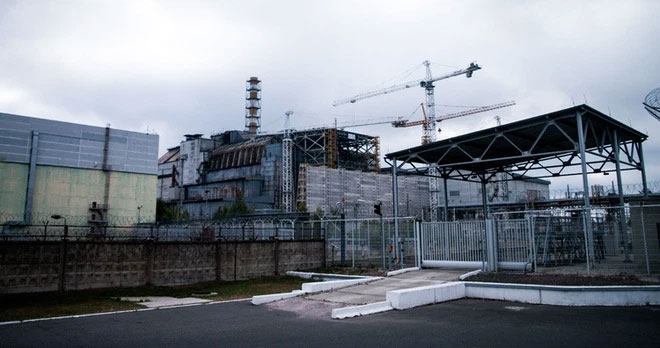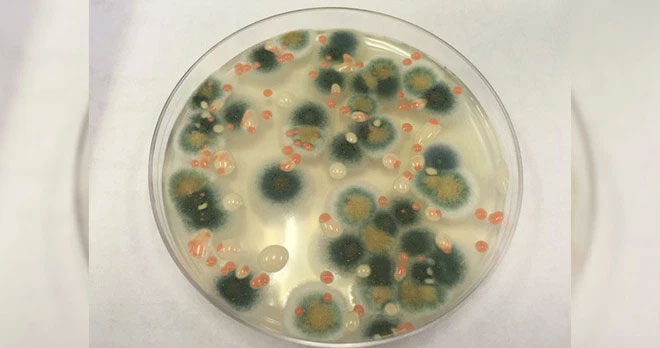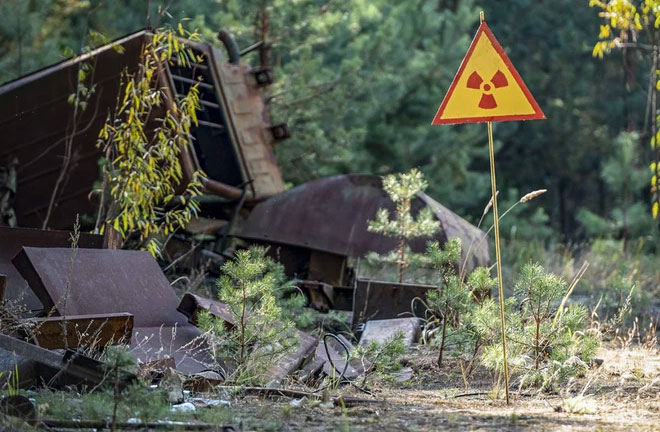If you know a few special things about fungi, you might be aware that they can thrive in the harshest conditions. From cardboard and jet fuel to asbestos and plastics, fungi can “eat” just about anything. However, the real shock came when scientists discovered a type of fungus that can “consume” radiation and grow inside the Chernobyl nuclear reactor. This special fungus, also known as “radiotrophic fungi,” feeds on radiation, and experts believe it could be used to create “sunblocks.”

This radioactive fungus was first discovered in 1991 around and inside the Chernobyl Nuclear Power Plant. It contains a large amount of melanin, which helps it convert radiation into energy for growth. Notably, melanin-rich fungal colonies began to rapidly develop in the cooling water of the reactor, turning them black. While there are many cases of extremophiles (organisms that can survive in extreme conditions like radioactive power plants), microbiologist Arturo Casadevall believes these fungi thrive because of radiation, not in spite of it.
In 1991, five years after the Chernobyl disaster, scientists found a strange black fungus, similar to mold on a dirty shower curtain, growing on the walls of the nuclear reactor. It puzzled them and raised questions about how it could grow in such a harsh, radiation-filled environment. They soon realized that this fungus was not only immune to lethal radiation but actually attracted to it!
A decade later, researchers discovered that the fungus was very rich in melanin, a pigment also found in human skin, and it could be used to perform the process of radiotrophy. Theoretically, radiotrophy is a process by which a living organism can absorb and convert ionizing radiation, essentially meaning it transforms radiation into some form of chemical energy that aids its growth. Scientists still cannot be certain whether melanin-rich fungi use a multi-step pathway like chlorophyll organisms do to photosynthesize.

Radiotrophic fungi or autotrophic fungi are types of fungi that can use radiation as an energy source to stimulate growth. Autotrophic fungi have been found in harsh environments such as the Chernobyl Nuclear Power Plant. Most known radioactive fungi utilize melanin in some capacity to survive.
Dr. Arturo Casadevall and Dr. Ekaterina Dadachova from Albert Einstein College of Medicine in New York conducted tests to see how three species of fungi growing at the Chernobyl nuclear reactor, specifically Wangiella dermatitidis, Cryptococcus neoformans, and Cladosporium sphaerospermum, reacted to gamma radiation from tungsten-188 and rhenium-188. The results published in the journal PLoS One showed that all three fungi grew faster and thrived in radioactive conditions.
Previous studies have revealed that fungi growing in contaminated areas often tend to seek out radiation sources to varying degrees. Some fungi found in Chernobyl can even decompose radioactive materials like hot graphite. Most of these fungi produce melanin pigment, and experts believe this pigment actually protects them from various environmental stresses. Dadachova and her team also found that when exposed to radiation, the melanin molecules in the fungi change shape, enabling them to perform metabolic chemical reactions four times faster than usual.
According to Dadachova, such radiation-eating fungi may have existed during the early Cretaceous period, during a time when Earth experienced “geomagnetic reversal,” an event that stripped the planet’s protective shield against cosmic rays. Many plant and animal species died during this time, but sediments indicate it was also a period of thriving for a large number of melanin-rich fungal spores.

Melanins are a family of natural pigments with protective properties that are typically dark brown or black. It is important to note that melanin has a high molecular weight. This pigment can transmit and shield energy, allowing it to absorb electromagnetic radiation and light. This quality means that melanin can protect melanized fungi from ionizing radiation. The energy transmission also helps enhance fungal growth, meaning that melanized fungi grow faster. Additionally, melanin gives fungi an advantage by allowing them to survive in various harsher and different environments. Examples of such environments include the damaged reactor at Chernobyl, space stations, and the mountains of Antarctica. Melanin may also help fungi convert radiation into energy, but further evidence and research are needed.
After discovering radiotrophic fungi, scientists began to wonder if human melanin-rich cells could convert radiation into energy. According to Casadevall, there is no specific evidence for this, and even if it were theoretically possible, the cells would not generate enough energy to sustain human life without food and water. On the other hand, researchers at NASA hypothesize that it may be possible to harness the radiation-absorbing power of fungi to create a drug that protects humans from harmful rays. Nuclear power plant engineers, cancer patients undergoing radiation therapy, and aviation pilots could all benefit from such a drug.


















































